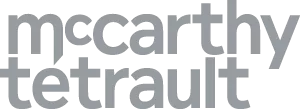- with readers working within the Environment & Waste Management and Utilities industries
- with Senior Company Executives and HR
Introduction
Under the Canadian Greenhouse Gas Offset System Regulations (the "Regulations"), proponents of projects that reduce greenhouse ("GHG") emissions or increase GHG removals from the atmosphere can generate federal offset credits if they implement projects meeting the requirements of the Regulations and an applicable federal offset protocol. Federal offset credits can be sold and used for compliance by facilities covered under the federal Output-Based Pricing System, or sold and used by others who are looking to meet voluntary climate commitments. Three federal offset protocols have been approved to date, covering Landfill Methane Recovery and Destruction, Reducing Greenhouse Gas Emissions from Refrigeration Systems and Improved Forest Management on Private Land.
Work on new protocols continues. In January 2025, Environment and Climate Change Canada ("ECCC") issued a preliminary draft of its Federal Offset Protocol for Direct Air Carbon Dioxide Capture and Geological Storage ("Draft Protocol"), which is designed for initiatives that capture carbon dioxide ("CO2") directly from the atmosphere and store it within subsurface geological formations. The Draft Protocol includes measurement, reporting and verification requirements to quantify GHG removals generated by direct air CO2 capture and geological storage ("DACCS") projects.
The deadline for comments on the Draft Protocol is March 28, 2025.
Key Requirements
To generate federal offset credits under the Draft Protocol, a project proponent must follow the established methodology to calculate emissions from project activities and meet certain requirements, in addition to the requirements established under the Regulations. Key features of the Draft Protocol include:
- Eligible Project Activities:
- Operation of a capture facility within the project site: There is no restriction on the specific direct air CO2 capture processes used, including liquid solvents, solid sorbents, or any other existing or emerging methods. Further, during the crediting period, the capture facility within the project site may provide captured CO2 for purposes/end uses other than CO2 geological storage.
- Operation of transport infrastructure within the project site (e.g. pipeline, rail, truck): The transport infrastructure within the project site used to transport the captured CO2 may have been operating prior to January 1, 2017, and for purposes unrelated to the project.
- Operation of injection infrastructure within the project site: The injection infrastructure within the project site may have been injecting CO2 into the associated storage reservoir prior to January 1, 2017, and can be a storage hub accepting CO2 from sources unrelated to the project (i.e. other direct air or point source capture facilities).
- Management of a storage reservoir within the project site: There is no restriction on the geological type of storage reservoir used, other than enhanced oil recovery being ineligible.
- New Project: The project site's capture facility must not have previously captured CO2.
- Start Date: The project's capture facility must have begun operating on or after January 1, 2022 (the date of the first injection in the storage site).
- Eligible Jurisdiction: The project site must be in a single province or territory of Canada and located in a province or territory that has sufficient environmental laws and enforcement governing the permanent storage of captured CO2. Currently, only Alberta, British Columbia and Saskatchewan have been designated as such provinces. Because of the requirement to be located in a single province, projects transporting CO2 between provinces or territories would not be eligible for federal offset credits.
- Additionality: GHG removals from a project must not result from compliance with federal, provincial, territorial laws, regulations or other legally-binding mandates. If GHG removals become legally required after a project's registration, the project will no longer receive credits for the GHG removal starting from the date the law or legal requirement comes into effect.
- Aggregation: Aggregation of two or more DACCS projects is not eligible under the Draft Protocol. The project site must include only one capture facility and one injection infrastructure.
- Avoiding the displacement of renewable energy: If renewable energy is used for a project, the renewable energy must be generated specifically for the project and must not be displaced or removed from the grid or pre-existing end users. If renewable energy is procured for the project, it must be produced in the project's province or territory. If renewable energy is supplied through the grid, the project and energy production facility must be connected to the same grid within the project's province or territory. Specifically, the energy must be generated for the project and not be displaced and removed from the grid.
Key Takeaways
Although certain elements of the Draft Protocol may evolve following the public comment period, it is evident that Canada remains committed to leveraging DACCS projects as a vital instrument in achieving its net-zero GHG target. Once finalized, the Draft Protocol will represent the fourth federal offset protocol established by the federal government. For proponents interested in or currently engaged in DACCS projects, the Draft Protocol offers clarity on how these projects can successfully generate federal carbon offset credits, thereby opening up opportunities to scale-up DACCS technologies.
As noted above, three federal offset protocols have been approved to date. In addition to the DACCS protocol, the following federal offset protocols are also under development:
- Reducing Enteric Methane Emissions from Beef Cattle: The draft protocol was published for a comment period, which closed on February 6, 2024. Publication of the final protocol is targeted for winter/spring 2025.
- Reducing Manure Methane Emissions: The draft protocol has been published for a 60-day comment period, ending on April 29, 2025.
- Enhanced Soil Organic Carbon: The timeline for publication of the draft protocol is yet to be determined.
- Improved Forest Management on Public Land: The timeline for publication of the draft protocol is yet to be determined.
Once federal offset protocols are finalized, they are included in the Compendium of Federal Offset Protocols.
To view the original article click here
The content of this article is intended to provide a general guide to the subject matter. Specialist advice should be sought about your specific circumstances.




